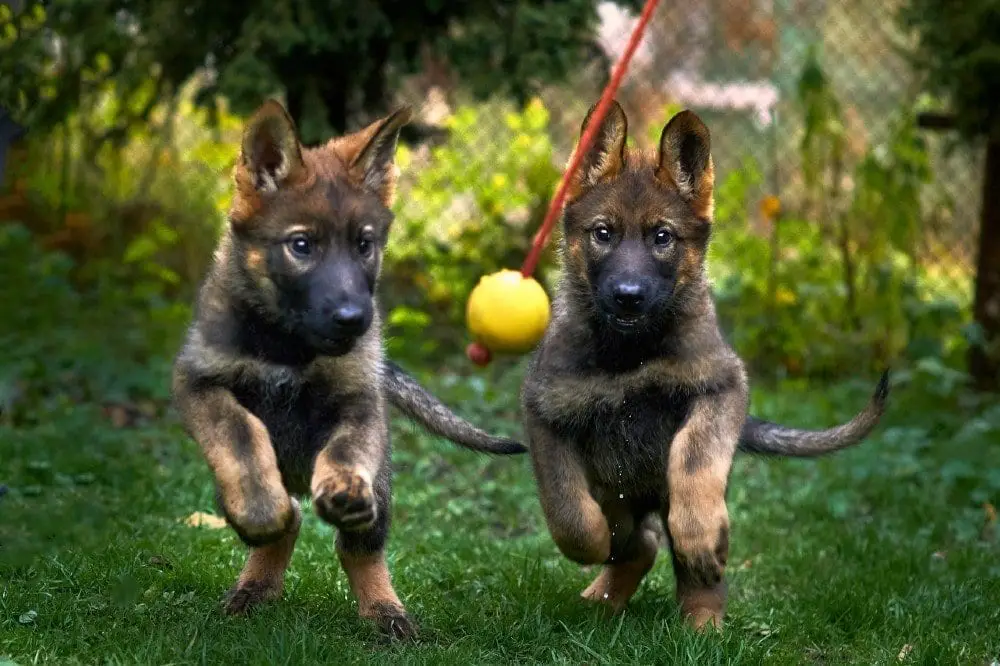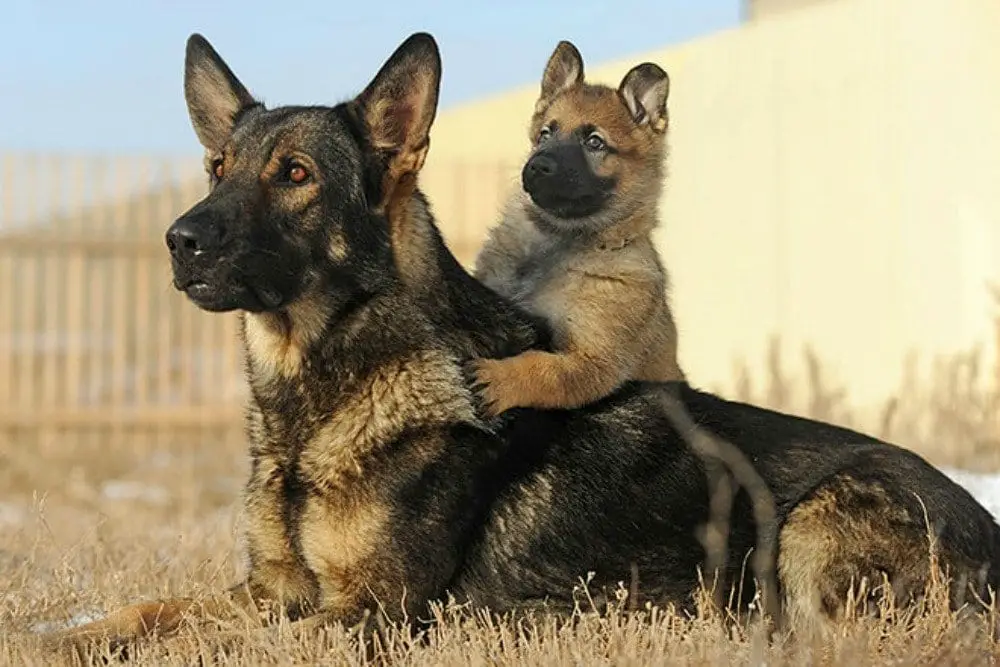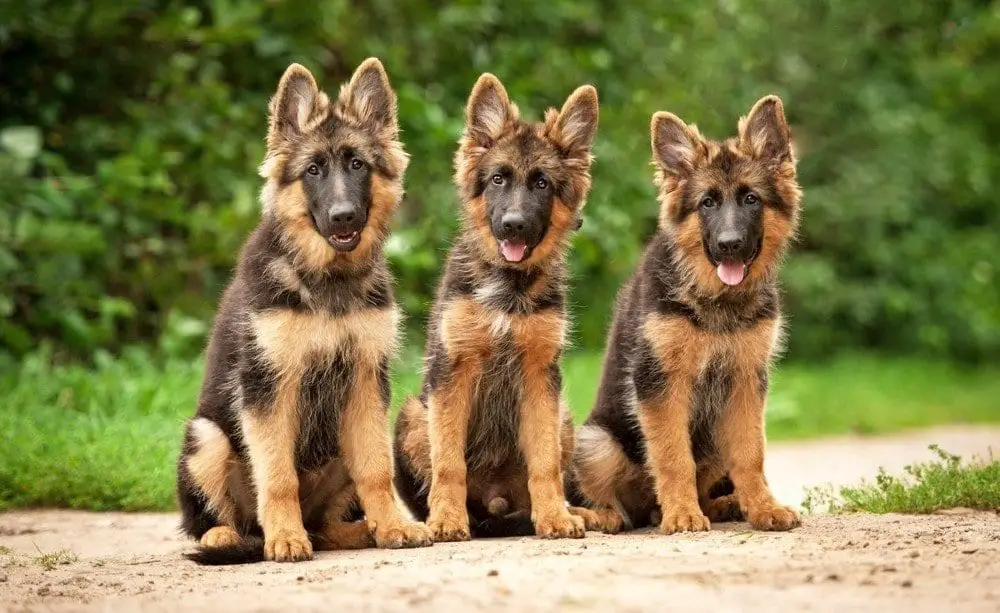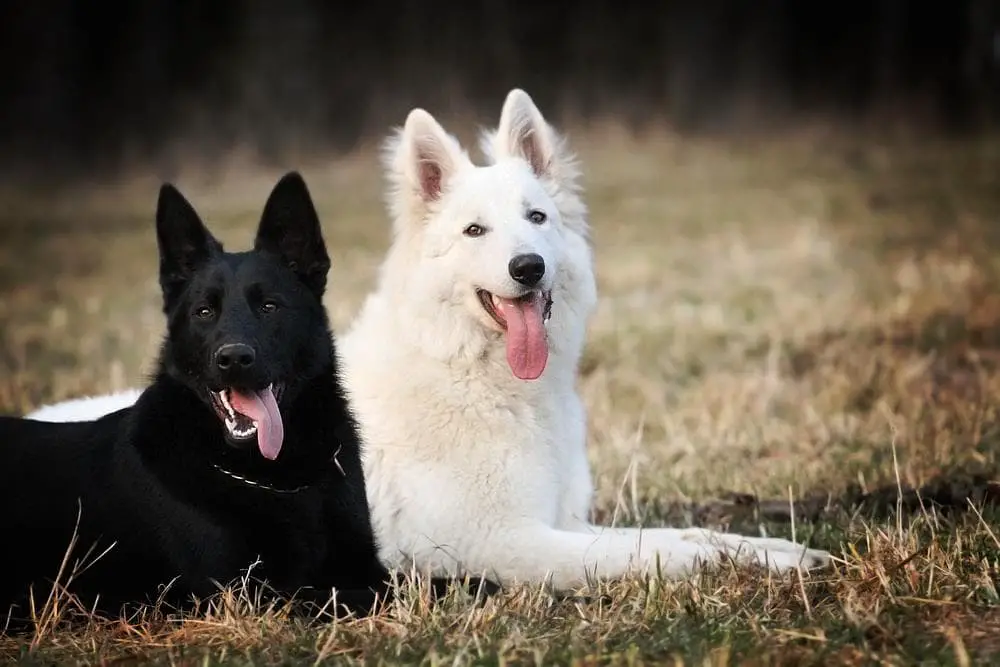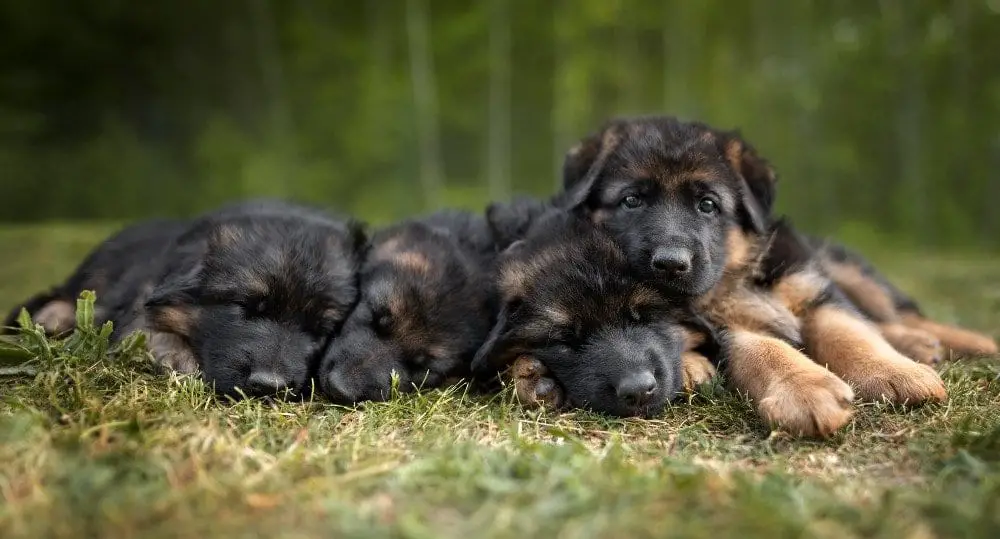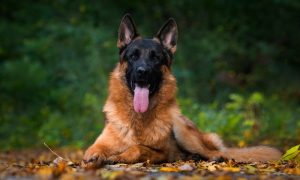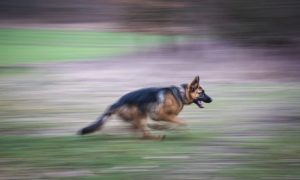Do German Shepherd puppies change colors as they grow? Yes, they do, except Black German Shepherds and White German Shepherds.
But color changes depend entirely on your German Shepherd’s genetics and bloodline.
Some bloodlines have a specific color scheme, which may lighten or darken as they grow. Some German Shepherd puppies develop entirely new color schemes as they mature.
Do German Shepherd Puppies Change Colors?
If you plan on getting a German Shepherd puppy or already have one, you may be wondering what they will look like as an adult.
The majority of German Shepherd puppies change colors on average until the age of two. However, every dog is different.
Some dogs may develop their color entirely within a year, and others may continue changing color even after two years.
German Shepherd puppies that end up with tan, red, or silver markings are born all black. The markings first appear around the legs and face soon after birth and give you an idea of what color they will turn out as they mature.
Sable German Shepherds, on the other hand, maybe a tan color at birth. Sable Shepherds change colors within six months and can continue to change colors until they are eighteen months old. Their final coat color and markings can take two years to settle in.
A White German Shepherd is born white and stays white. During summer months, a White Shepherd may develop a light yellowish gold tint that gets replaced with a thick pure white coat during winter months.
Black German Shepherds are born black and remain black through adulthood.
Are German Shepherd Coat Colors Seasonal?
A German Shepherd’s permanent coat coloring and markings happen on average around the age of two.
A German Shepherd’s color isn’t seasonal, but their coats are.
German Shepherds shed their coat multiple times per year on average. Dogs that live outdoors blow their coat at least twice per year.
German Shepherds that mostly live indoors may only shed their coat once a year. However, indoor Shepherds may shed moderately all year round.
There’s a difference between a summer and winter coat. In the winter, your Shepherd will shed their summer coat and grow thicker and darker fur.
In the summer, your Shepherd’s coat will become lighter and shorter. This change will be even more prominent for German Shepherds that live outdoors.
Common Colors in German Shepherds
German Shepherds come in thirteen recognized coat colors. These colors depend on the various breeding methods and bloodlines that have been adapted over the years.
Each color scheme has different traits.
Below are a few of the most common German Shepherd bloodlines and their colors:
North American and Canadian Show Line German Shepherds
These German Shepherds usually have the famous saddle pattern.
The saddle is typically black with a lighter undercoat. The undercoat may be tan or cream-colored. Some of these GSDs may even have a white hint around the legs, tail, and chest area.
West German Show Line German Shepherds
West German show line German Shepherds also have the quintessential saddle marking.
However, the saddle marking may vary in shade. The undercoat will be tan or red. In some cases, a dog may have hints of cream and along with the tan, which is usually around the undercoat and chest area.
West German Working Line German Shepherds
The West German Working line rarely has saddle markings. These Shepherds come in a black sable color scheme. This color has black areas, while some areas may have a hint of white and grey.
The grey and white markings will usually be around the muzzle, legs, chest, and tail area.
West German Working line German Shepherds are also available in black and tan or black and bi-colors. However, these colors are rare in this bloodline.
East German Working Line German Shepherds
East German Working German Shepherds have the darkest color of all the bloodlines. They are usually black and sable in color. They have beautiful black or grey masks and generally do not have saddle markings.
Czech Working Line German Shepherds
The Czech working line German Shepherds also have similar markings to East German Working Line German Shepherds. However, their markings are lighter.
The color pigmentation of these bloodlines also varies according to the area where are were bred.
Why Do German Shepherds Have Different Colors?
The different colors of the German Shepherd Dog are dependent on genetics. German Shepherds were originally bred as working dogs.
Over time, they were selectively bred for the show ring.
Breeding for show entailed breeding dogs of a specific color and physical traits. Over the years, German Shepherds evolved in color and physical characteristics depending on the purpose they were bred to accomplish.
Show dogs have a heavier coat and vibrant colors. In comparison, working line German Shepherds have darker colors and shorter coats.
How to Get the German Shepherd Color You Want
If you plan to get a German Shepherd puppy and have a color preference, you will need to research finding a reputable breeder.
Certified breeders stick to specific bloodlines to predict and guarantee health, size, temperament, and color.
For example, if you want a Sable German Shepherd, find a breeder specializing in sable puppies. Ask if you can meet the parents or at least see pictures of the Sire and Dam and previous litters.
Look at the parents to get an idea of what a puppy’s color and markings will be upon maturity. This method isn’t always foolproof, but chances are that a pup will develop a color similar to their parents.
Reputable breeders are happy to provide pictures and background on their bloodlines and kennel history.


